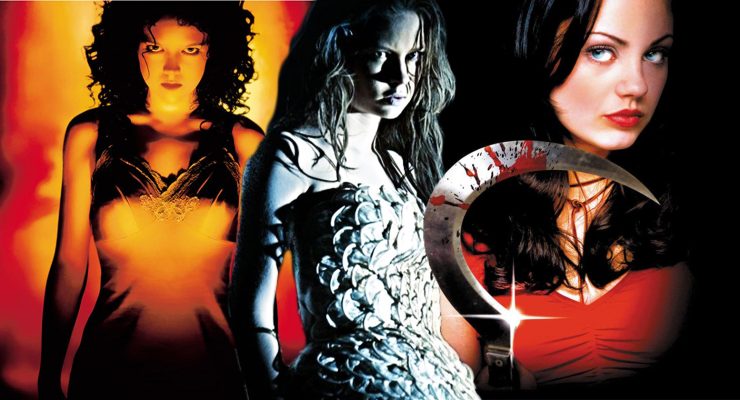The Scopia Effect, 2014.
Written and Directed by Christopher Butler.
Starring Joanna Ignaczewski, Akira Koieyama, Julian Seager, Louis Labovitch, and Jessica Jay.
SYNOPSIS:
Past life regression therapy unlocks the dark recesses of a young girl’s mind. As time periods collide and incarnations merge through a single entity. Basia (Joanna Ignaczewski) must find a way to fight the darkness before she is consumed completely.
What The Scopia Effect does with style and economy is condense a sprawling narrative, broad canvas and huge undertaking into an arthouse overcoat. Big on atmospherics and precise framing, Chris Butler has created a claustrophobic mood piece. Which is carefully balanced by a number of essential factors.
In Joanna Ignaczewski he has found the singular component upon which his enterprise hinges. Her portrayal of Basia is at once modulated and calculating without foregoing that emotional core. Whether naked in dream sequences or reacting to empty space, Ignaczewski vividly realises Basia’s escalating mania without cliché. It is she who holds the audience enthralled, whether stretched out on a therapists sofa or just eating ice cream.
Butler has managed to fill each frame with a slow creeping dread, making every scene somehow familiar yet unnerving. In his depiction of different time periods which all intercut with Basia’s present day. There is a unique sense of time and place which some blockbusters have been unable to conjure with ten times the budget. Much of this has to do with Butler’s visual effects team who are veterans of The Matrix’ and Cloud Atlas amongst others.
Although these historical elements are minimal in length, it is the skill and care taken in those moments which raise The Scopia Effect above its contemporaries. His decision to use two cinematographers for past and present time also proves a resounding success. Not only creating a clear delineation through deferring colour palettes. But also adding an additional raw quality similar in part to Anthony Dod Mantle’s work on 28 Days Later.
For this reason it is unsurprising that cinematographers Jaime Feliu Torres and Cahrlie Herranz won awards for their work. Butler’s decisions in collusion with his directors of photography are fundamental in making this film work. Joanna Ignaczewski’s performance is undoubtedly committed, but it is the technical accomplishments which make the movie. With limited means Butler has visualised his own screenplay as a hypnotic tour de force. Mesmerising, engrossing but ultimately ambiguous in its denouement.
In the final analysis Butler’s first film is a triumph of economy over ideas. There is a fully realised central performance, but underwritten supporting roles hidden in part by an audacious technical achievement. Which manages to engross, distance but distract in equal measure. Meaning one is more voyeur than emotional participant. An observer of something with flashes of brilliance amongst the histrionics and moments of quiet reflection.
With The Scopia Effect Chris Butler has landed somewhere between the arthouse and multiplex. Pooling together the best technicians in visual effects and cutting edge cinematography. To tell a story of breadth with skill and restraint. In my experience such talent will not be bound by the limits of indie film making for long.
The Scopia Effect is available on DVD from February 15th
Flickering Myth Rating – Film: ★ ★ ★ ★ / Movie: ★ ★ ★
Martin Carr – Follow me on Twitter
https://youtu.be/XUGnM460Waw?list=PL18yMRIfoszEaHYNDTy5C-cH9Oa2gN5ng










